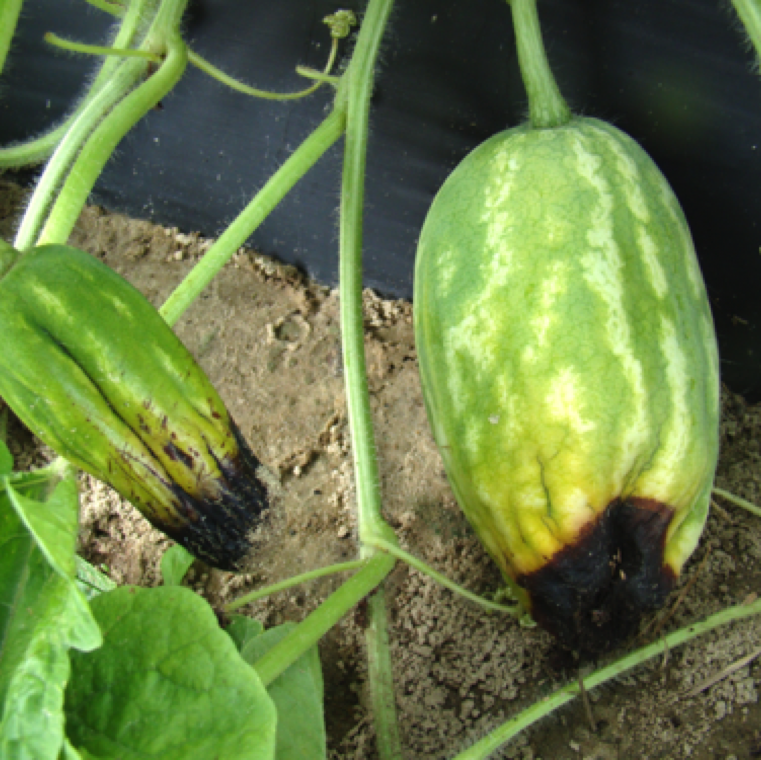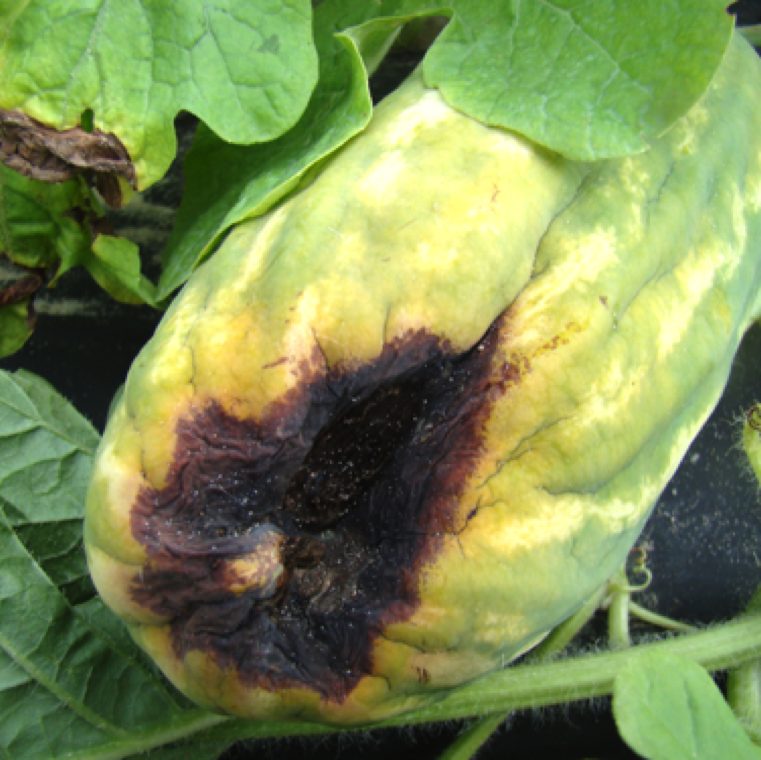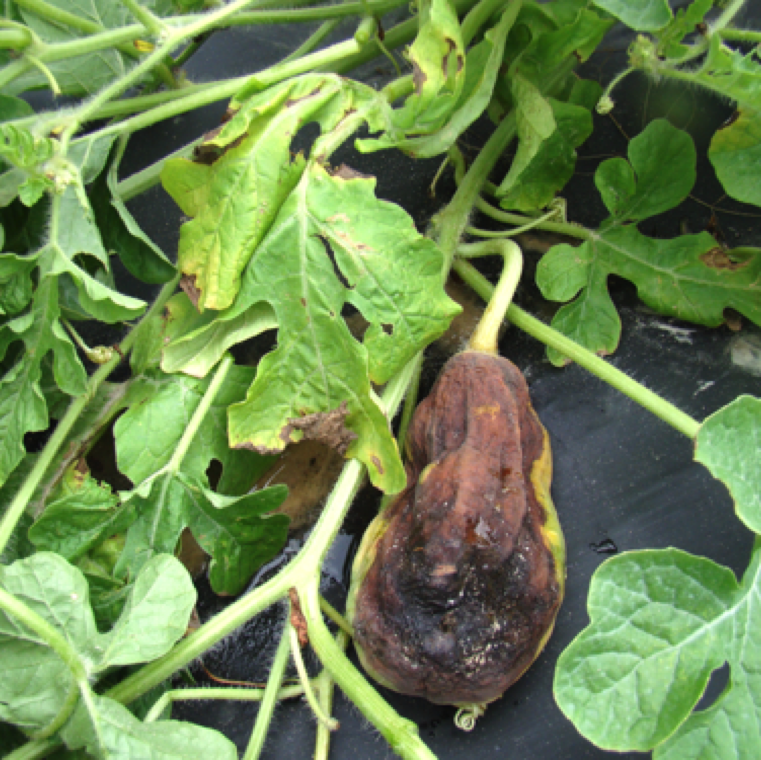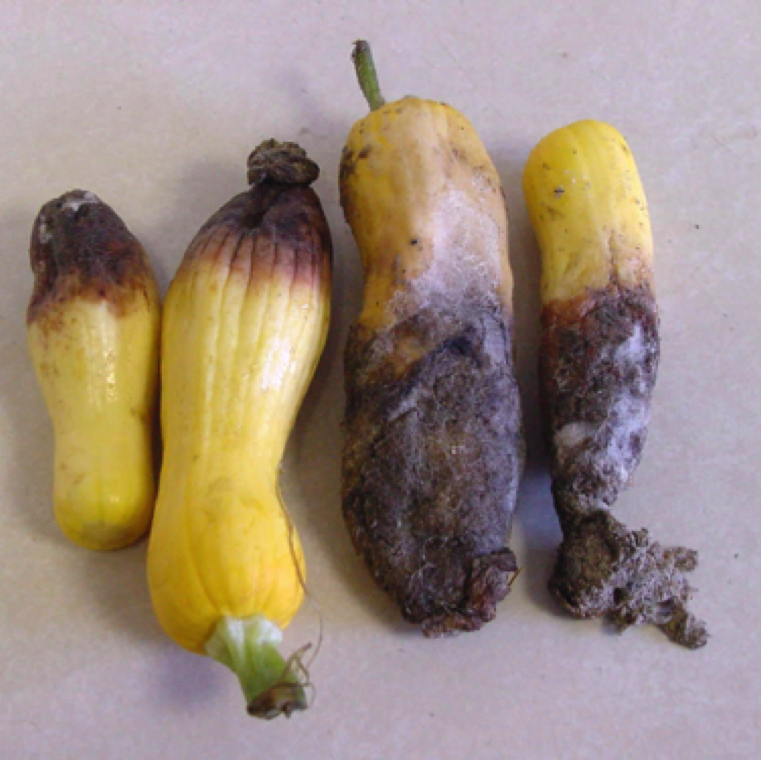


Blossom end rot symptoms start as water-soaked regions near the blossom end of the fruit in all cucurbits. The affected areas darkens in a widening circle a seen on watermelon here.

The affected tissue becomes dark and sunken and have a dry leathery appearance, and the fruits turn yellow. In case of watermelon this symptom will be similar for natural abortion of the fruit also.
BLOSSOM END ROT
Cause: Calcium deficiency/lack of translocation
Cucurbit diseases

